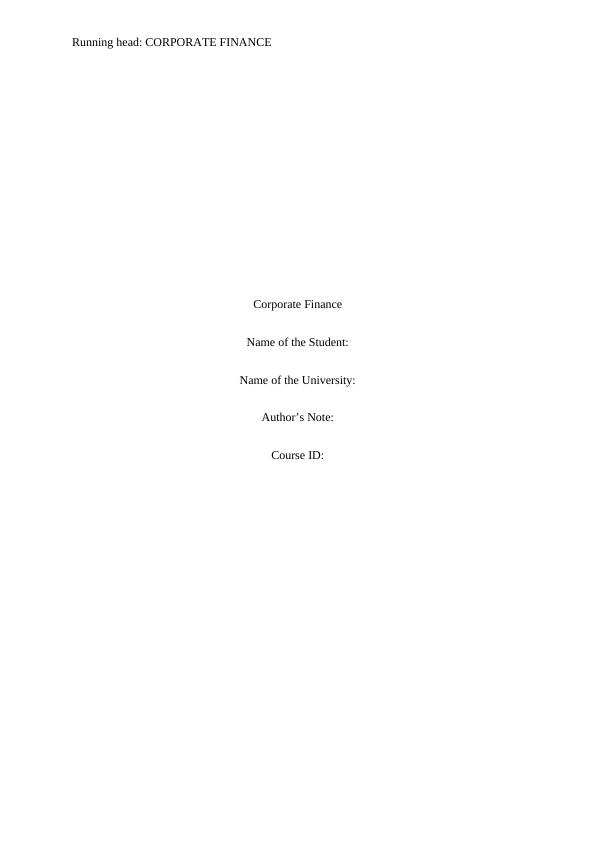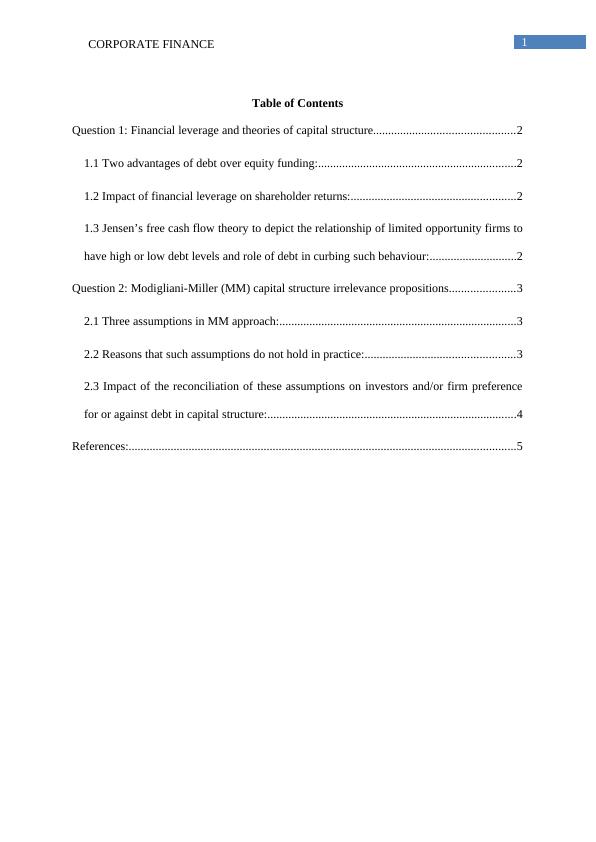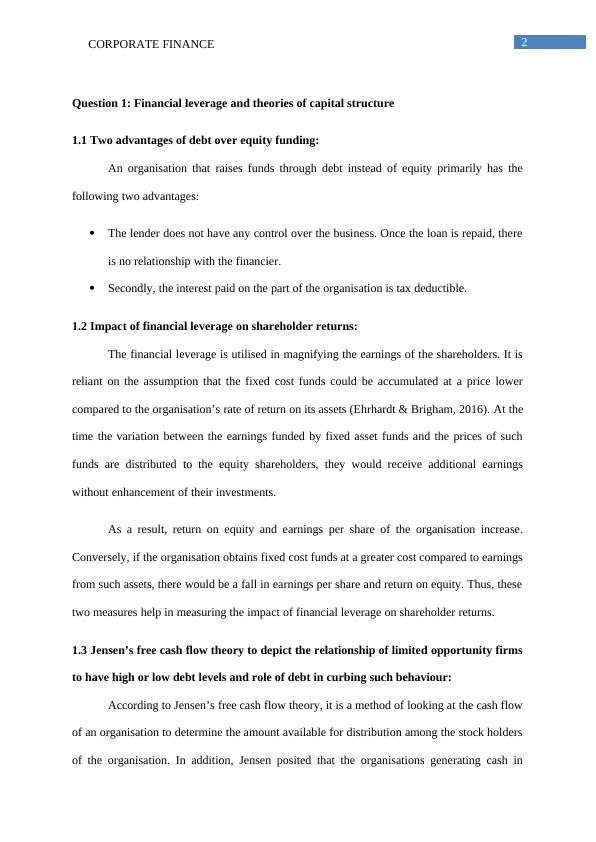Corporate Finance and MM Approach: Doc
6 Pages1193 Words49 Views
Added on 2020-05-08
Corporate Finance and MM Approach: Doc
Added on 2020-05-08
ShareRelated Documents
End of preview
Want to access all the pages? Upload your documents or become a member.
Capital Structure Theories and Calculation of Cost of Capital for Desklib
|14
|3192
|289
Financial Decision Making Solution Assignment (Doc)
|15
|1919
|165
Corporate Finance: Trade-Off Theory and Pecking Order Theory
|7
|1275
|377
ASSIGNMENT ON CAPITAL STRUCTURE ANALYSIS.
|14
|2948
|28
Corporate Finance Solved Assignment
|11
|3113
|45
Dividend Irrelevance and Capital Structure Theories
|7
|2067
|323



